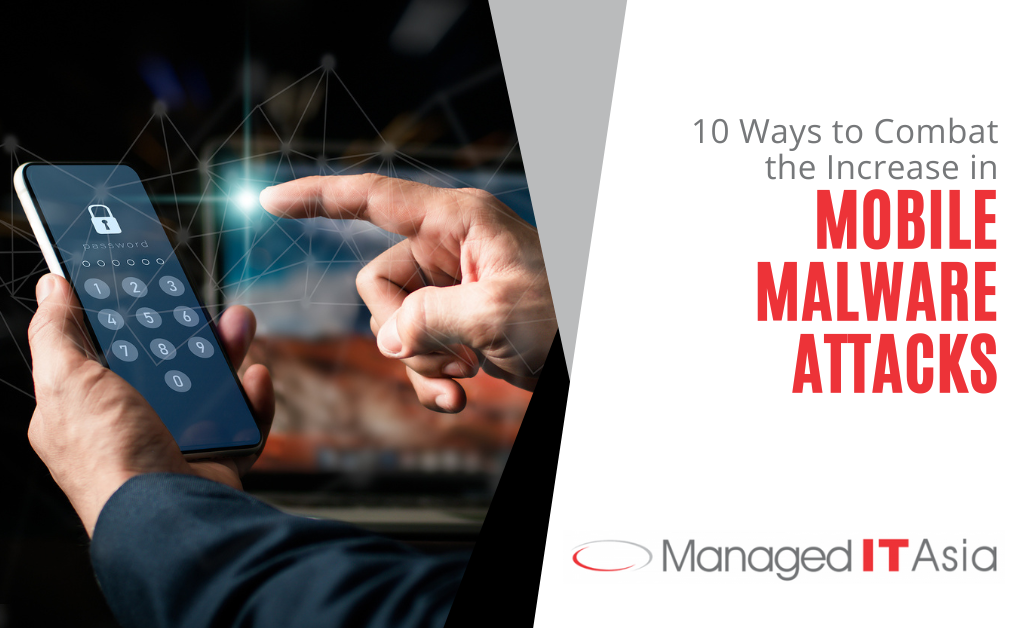Malware, or malicious software, is designed to harm your device or access your personal information without your permission. While there are many different types of malware, mobile malware is specifically designed to target mobile devices like smartphones and tablets. With the increase in mobile malware attacks, it’s important to know how to protect your device. In this article, we’ll give you 10 tips for avoiding mobile malware and what to do if you think your device has been infected.
1. Keep Your Software Up-To-Date
One of the best ways to combat mobile malware is to keep your software up-to-date. Software updates usually include security patches that can help protect your device against the latest threats. This includes the apps you have installed on your mobile device as well as the device’s operating system.
2. Use a Secure Lock Screen
Using a secure lock screen is another important step in protecting your device from mobile malware. A lock screen will help prevent any local threats from manually installing malware on your device. A secure lock screen can also help prevent someone from gaining access to your device if it’s lost or stolen.
3. Don’t Download Apps From Untrustworthy Sources
One of the most common ways that mobile malware is spread is through malicious apps. These apps can look like legitimate apps, but they’re designed to harm your device or steal your personal information. That’s why it’s important to only download apps from trusted sources, like the Google Play Store or the Apple App Store. When installing a new app, take a moment to review the permissions it’s asking for. If an app is asking for more permissions than it needs, it could be a sign that it’s trying to collect your data without your knowledge.
4. Don’t Click on Unknown Links
You should also be careful about clicking on unknown links, even if they’re sent from a friend or family member. These links could be part of a phishing attack, where criminals try to trick you into giving them your personal information. If you’re not sure whether a link is safe, you can hover over it to see where it will take you before you click on it. When entering your personal information into a website, make sure you’re on a secure and trusted site. Avoid entering your information into unfamiliar or untrustworthy websites, as they could be trying to collect your data without your consent. Between 2017 and 2021, phishing scams in Singapore quadrupled.
5. Beware of Suspicious Emails and Texts
Malware can also be spread through suspicious emails and texts. They do so by including malicious links, as mentioned previously, in the messages. These messages may try to trick you into clicking on a malicious link or persuade you into downloading a malicious app. If you receive a suspicious email or text, delete it immediately.
6. Use a VPN
A VPN, or virtual private network, can help protect your device from mobile malware by encrypting your data and hiding your IP address. This makes it more difficult for criminals to track your activity or steal your personal information. This is especially true if you frequently use public WiFi access points.
7. Install an Antivirus or Security App
Installing a security app is another great way to protect your device from mobile malware. These apps can help scan your device for malicious apps and detect suspicious activity. They can also block dangerous websites and help you recover your device if it’s lost or stolen.
8. Don’t Root or Jailbreak Your Device
Rooting or jailbreaking your device can make it more vulnerable to mobile malware. That’s because it gives criminals access to parts of your device that they wouldn’t otherwise have access to. If you do root or jailbreak your device, be sure to install a security app and only download apps from trusted sources.
9. Back Up Your Data
Backing up your data is important for any device, but it’s especially important for mobile devices. While data loss is normally more of a concern because mobile devices are more likely to be lost or stolen, if your device is infected with malware, you may also lose access to your data. Be sure to back up your data regularly, and if you think your device has been infected, you can restore your data from your backup to a point prior to infection.
10. Factory Reset Your Device
If you think your device has been infected with mobile malware, you can try a factory reset. This will reset your device to its factory settings, which will remove any malicious software that may be installed. Keep in mind that this will also delete any personal data you have on your device, so be sure to back up your data first.
No Security Measure Is Perfect
Following these tips can help keep your device safe from mobile malware attacks. However, no security measure is perfect, so it’s important to be prepared in case your device does get infected. If you think your device has been infected with malware, contact a professional for assistance.
Get Expert Assistance Reducing Mobile Device Risk at Your Business
Managed IT Asia has extensive experience working with organizations at all levels to analyze the use and best practices for security implementations. Contact us today to schedule your free consultation. Call +65 6748 8776 or reach us online.
MANAGED IT ASIA, we are an IT Support, IT Solutioning and Managed IT Service Provider specializing in serving Small Businesses across Asia. Call us at +65 6748 8776 and let us manage your Small Business IT today!
